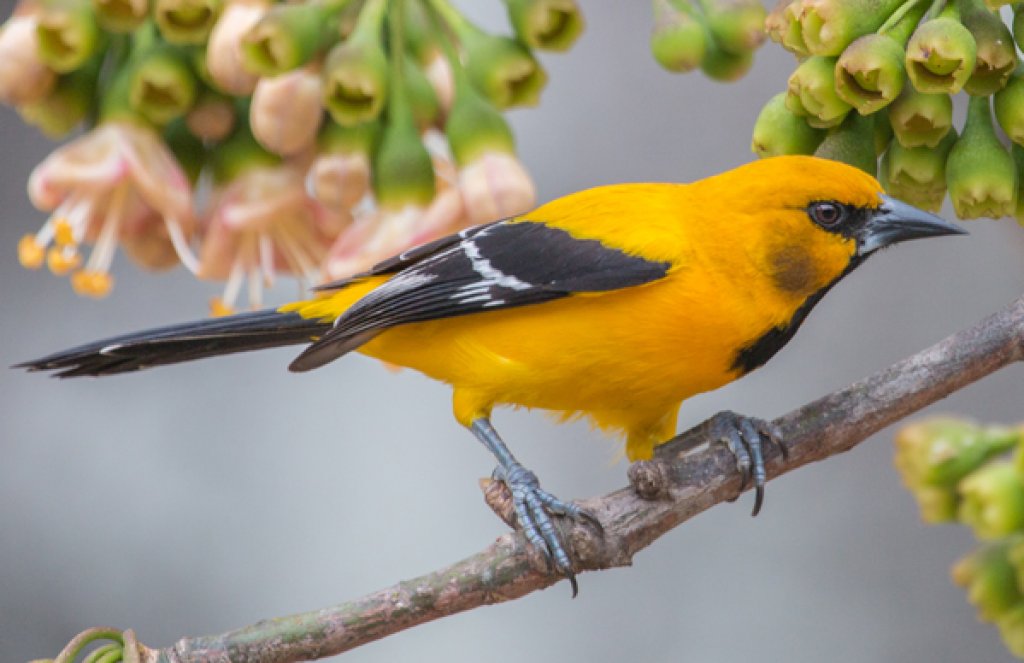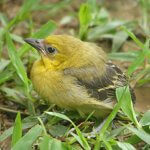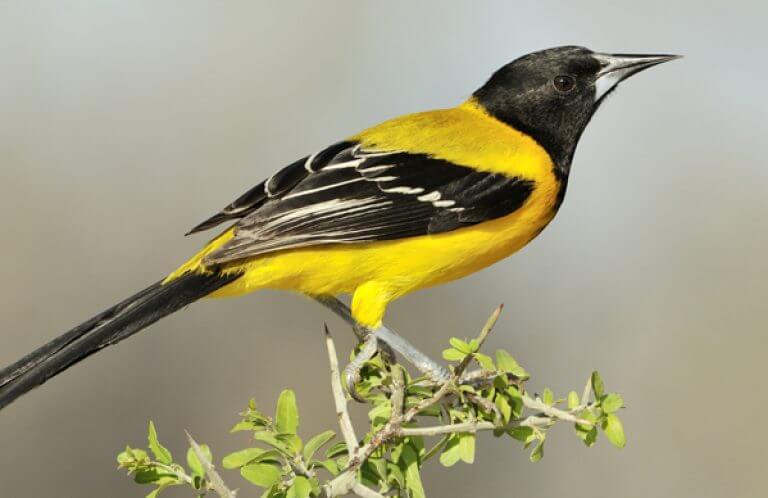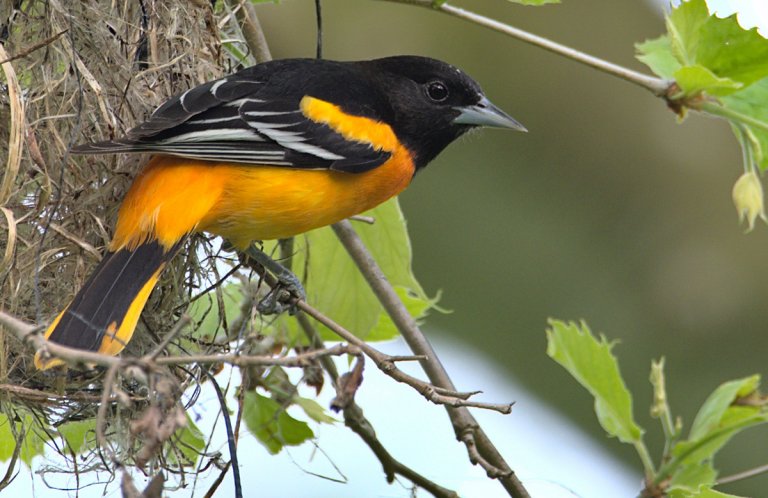About the Yellow Oriole
The Yellow Oriole, like the Yellow Warbler, is aptly named, with plumage of largely that color. Although patterned like other orioles in its family, such as the Audubon's Oriole (with black wings, tail, and head), the Yellow Oriole has minimal amounts of this contrasting color. Both sexes have mere touches of black on the head and throat, with black tail and wings that have a white wing bar and feather edging. Female and juvenile birds are duller than the brightly colored males.
This oriole has many folk names across its wide range. In Venezuela it is simply known as “Gonzalito”; neighboring countries call it the João-pinto-amarelo (Brazil) or Oriole jaune (French Guiana). Other places call it the plantain or small corn bird. Whatever the nickname, the Yellow Oriole's bright plumage makes it a stand-out.
The Yellow Oriole even represents an important new conservation program in one South American city.
Chicaos for Columbian Conservation
In 2023, the Colombian town of Santander de Quilichao was designated as the first “Bird City” in South America by Ciudad de las Aves Colombia, which is part of the Bird City Network. During the application process, legislators from the municipality chose the Yellow Oriole, known there as Chicao (golden bird), as the community's mascot.
The Bird City Network unites Bird City Programs like Ciudad de las Aves Colombia across the hemisphere into a coalition to promote bird conservation. Bird City communities seek to ensure the long-term well-being of birds by enhancing their habitats, safeguarding their migratory routes, reducing threats to their survival, and providing education to youth and adults. The Network fosters cooperation within and among participating communities, helping them share resources, knowledge, and achievements.
Songs and Sounds
The Yellow Oriole's song consists of melodious, flute-like notes mixed with harsher buzzes and trills. Listen here:
Breeding and Feeding
Like its close relatives, the Yellow Oriole is seasonally monogamous, meaning that it pairs up with one mate for a breeding season. The male courts prospective mates by high-speed chases through the tree canopy. Once mated, the female begins to weave her nest, which consists of a hanging pouch of grasses and other vegetation that resembles a Baltimore Oriole's. The male remains close by, and may even bring building materials to the female, but she does the majority of the nest building. The female Yellow Oriole lays an average of three eggs, which she incubates until hatching. The male assists in feeding the young birds until they are old enough to fledge.
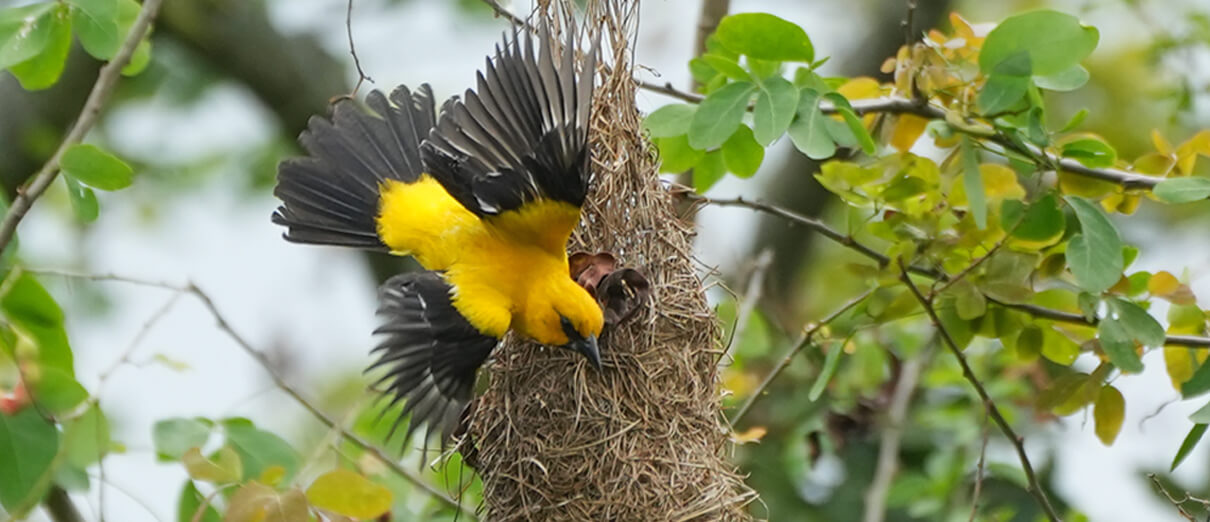
The Yellow Oriole mainly feeds on large insects, but also fruit, including mangoes, bananas, and berries, plus some nectar. Like the Cape May Warbler and 'Anianiau, it will pierce the base of a flower with its sharp-tipped bill to get at the sweet liquid.
This oriole forages slowly and methodically through the mid- to upper-forest canopy as it feeds, usually alone or in pairs.
Region and Range
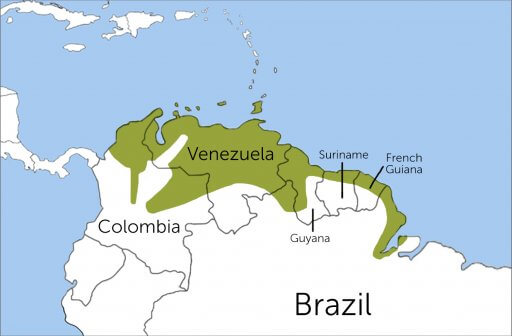
The Yellow Oriole is a widespread resident across northern South America, found in Colombia, Venezuela, the Guianas, northern Brazil, and near-shore islands including Trinidad and the Leeward Antilles.
Yellow Orioles prefer open woodlands and scrub lands as well as more suburban settings such as gardens and parks. There are four subspecies recognized; three restricted to small ranges: One occurs on Aruba, Curacao, and Bonaire, one on Margarita Island, and the third on Trinidad and the adjacent mainland of Venezuela's Paria Peninsula. These subspecies differ in body and bill size and minor plumage details.
Conservation of the Yellow Oriole

Help support ABC's conservation mission!
The Yellow Oriole is common across its range. It has been noted in five ABC-supported areas in Colombia, including El Silencio Natural Reserve and El Paujil Reserve, both of which shelter the Critically Endangered Blue-billed Curassow and wintering migrants such as Prothonotary, Cerulean, and Canada Warblers. These areas are also part of the Central Andes BirdScape, which spans more than two million acres and promotes conservation activities such as bird-friendly coffee and native tree restoration.
Other Colombian reserves where the Yellow Oriole can be found include El Dorado Reserve, which protects many endemic bird species such as the Santa Marta Parakeet, and the Cerulean Warbler Reserve, where the Endangered and elusive Gorgeted Wood-Quail can be seen.
Get Involved
Many of the rarest bird species in the Western Hemisphere remain relatively unknown. You can learn more about these birds and the threats they face by signing up for ABC's Bird of the Week email series, which frequently highlights these fascinating birds.
American Bird Conservancy and our partners throughout Latin America and the Caribbean have created and expanded more than 100 bird reserves, which protect upward of 1.1 million acres of vital habitat. Together, we've planted more than 6.8 million trees, helping to restore degraded and damaged habitat. You can help us continue to protect endangered birds by making a gift today.





































